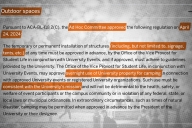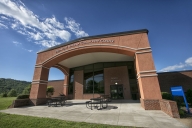You have /5 articles left.
Sign up for a free account or log in.
Vocational training has always been one of the key missions of community colleges, and millions of students every year advance their careers or find career paths at two-year institutions. But problems that plague academic programs at two- and four-year institutions -- especially the issue of poorly prepared students -- are holding back vocational programs, according to speakers at the annual meeting of the American Association of Community Colleges, in Long Beach.
While many community colleges have long had “2+2” programs that link the curriculum in the last two years of high school with two years at a community college, speakers said that those programs aren’t reaching enough students and aren’t nearly ambitious enough in steering students in the right direction.
The usual culprits -- underperforming high schools, unmotivated high schoolers -- got plenty of blame, but so did community colleges.
“You have advertised yourselves as second chance institutions, and students believed you,” said Gene Bottoms, senior vice president of the Southern Regional Education Board. By saying over and over again that community colleges will help anyone, the colleges have unintentionally sent a message to high school students on a vocational track not to worry too much about the courses they take, and how hard they study, Bottoms said.
“What you have then is five years, starting in seventh grade, of students making bad decisions,” he said.
Dealing with this problem in vocational programs at two-year colleges is essential because if those programs spend their time on remediation, as many do now, they won’t be effective in dealing with the economic challenges that motivate colleges to create these programs, said Larry Warford, director of the College and Career Transitions Initiative of the League for Innovation in the Community College.
Warford said that he considered the “learning college” movement to be the last major philosophical push in two-year education, and that better preparation for vocational students was becoming “the next big movement.”
A general theme of those working on the issue is that gentle suggestion isn’t doing the trick. Warford noted that in vocational programs, just as in more traditional academic programs, the best way to predict a student’s success is to see which courses he or she took in high school. Colleges have been too reliant on an assumption -- clearly false -- that students will go to colleges’ Web sites or ask guidance counselors what courses to take, and then take them, he added. As a result, community colleges that say they can offer various kinds of career training in two years may not be being truthful -- if a year or more is needed in remedial work, the real program length is much longer than two years.
Bottoms was more blunt: “Kids need someone in their face. Nobody is telling kids and their families the truth.”
One model praised was for states to get in students’ faces -- or to force schools and colleges to do so. Kathy Hughes, a scholar at the Community College Research Center at Columbia University's Teachers College, said that states are starting to respond to these issues with much more rigorous requirements related to the transition from high school to college. Among the examples she cited:
- South Carolina is requiring middle and high schools to have career specialists to help students plan their education so they won’t need remedial training later.
- Oregon is requiring high school students to develop a formal education plan that relates to their post-graduation goals.
- Delaware is adding a three-credit high school course requirement related to long-term career goals.
Beyond those efforts, individual collaborations between colleges and high schools need to become more detailed and more intense, said several speakers.
Warford, director of the College and Career Transitions Initiative, cited that program as an example. The effort has to date involved a small number of community colleges, working with local high schools on specific vocational areas -- Northern Virginia Community College in health sciences, Prince George’s Community College in public safety and security, and Southwestern Oregon Community College in information technology, for example.
With local high schools, the colleges develop not just general requirements, but specific courses for students to take, from 9th through 12th grade, and then in the community college, to reach certain degree and career goals. A student would get not just a list of requirements, but a very precise road map that -- if followed -- would eliminate the need for remedial education.
The program is currently expanding to involve many more community colleges.
Bottoms of the SREB said that efforts with that level of specificity are needed. Many colleges have to date relied on standardized test score requirements to give high schools a sense of appropriate knowledge levels required. But that doesn’t work, Bottoms said. “You can’t teach to a 19 on the ACT. Community colleges can tell high schools which courses students need to take, though.”
James McKenney, vice president of economic and workforce development at the AACC, said that community colleges also need to pay attention to the ever growing accountability movement in Washington. He said that federal officials are going to want to see that investments in community colleges (through student aid, for example) are paying dividends. Minimizing remedial education will go a long way toward showing the cost-effectiveness of these programs, he said.
At the same time, however, he stressed that the main reason to act on these issues is that such steps will help students. “We shouldn’t be reacting out of alarm about accountability, but based on where we live and what we do,” he said.








